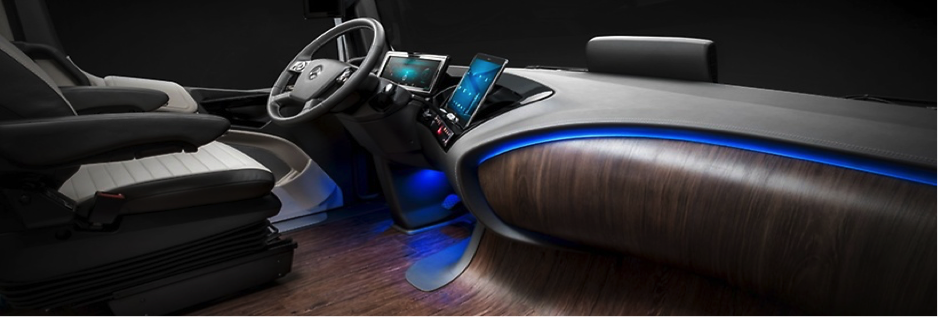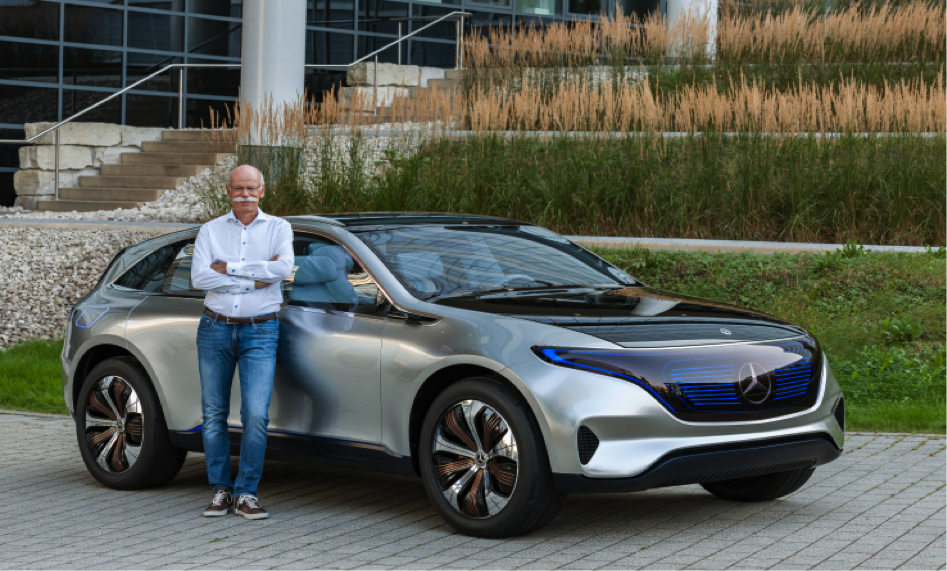Self-driving cars are coming, and your chances of experiencing a self-driving fleet just increased. On January 31, 2016, Uber announced its partnership with Daimler, the Mercedes-Benz manufacturer, to bring the German automaker’s self-driving vehicles on Uber’s ride-hailing network in the foreseeable future.[1] This partnership “marks the first time a major automaker will provide its own self-driving vehicles – built entirely in-house and without Uber’s help – specifically to operate on the ride-hailing company’s network.”[2]
Rumors of the partnership first sparked in early 2016, when a German magazine tabloid stated that Uber placed an order for 100,000 Mercedes S-Class series with Daimler.[3] The report cited unnamed sources and soon after the buzz faded.[4]
Uber launched its first self-driving vehicle program in Pittsburgh, Pennsylvania, where it used Ford Focus vehicles first and then Volvo SUVs.[5] In August 2016, Uber launched its self-driving Volvo SUVs in San Francisco, but within a week, the California Department of Motor Vehicles forced Uber to shut the program down, arguing that Uber did not have the proper permits for its self-driving experiment.[6] Since then, Uber has not released self-driving vehicles in other cities, but plans to launch a program in Phoenix, Arizona.[7]
Uber’s agreement with Daimler is not exclusive, which means that Daimler has the ability to manufacture self-driving vehicles for Uber’s competitors, such as Lyft.[8] Uber, however, is also able to bring other selfless driving car manufacturers onto its platform.[9] The newly formed partnership is an excellent strategic move for Uber’s transportation network, given that the company has no experience in vehicle production,[10]

(This is a photograph of the interior of a future 2025 Mercedes-Benz truck. Photo taken from DAIMLER, Autonomous Driving, https://www.daimler.com/innovation/autonomous-driving/special/changes.html (last visited Feb. 8, 2017).
The two businesses are still negotiating some of the terms of their partnership.[11] In particular, neither business publicized the financial details of their agreement, so the financial arrangement between the two businesses is not set in stone.[12] Uber passengers should, however, expect to receive a ride from an autonomous Mercedes-Benz sedan, as that is one of the major aspects of the partnership. Thus, the difference the partnership creates is replacing the man in a Corolla with a Benz robocar. According to the arrangement, Daimler will not tamper with any of Uber’s self-driving vehicle hardware or software, but rather Uber will use Daimler’s self-driving vehicles as a new form of transportation for its riders.[13] Likewise, Daimler “will tap the technology Uber uses to connect riders to cars,”[14] creating an entirely new experience for Uber riders.

(Photo taken from Darrell Etherington, Daimler to operate self-driving cars on Uber’s network, TECHCRUNCH (Jan. 31, 2017), https://techcrunch.com/2017/01/31/daimler-will-build-self-driving-cars-for-uber/. ).
Both companies will benefit from the alliance. For Uber, there are two primary benefits: (1) cooperating with car manufacturers could reduce the view that “Uber is a threat to the sales of the auto industry;” and (2) Uber’s ride-hailing network can increase “its supply of vehicles to pick up a growing base of riders.”[15] Daimler, on the other hand, profits from Uber’s customer base, saving itself “the hassle (and expense) of building the dispatch and routing system needed to connect those people with its cars and get them where they’re going.”[16] So, it’s a win-win-win.
Uber’s biggest competitor, Lyft, is also working with an automobile manufacturer. In January 2016, General Motors invested $500 million in Lyft and bought the self-driving vehicle startup Cruise.[17] Moreover, John Zimmer, president and co-founder of Lyft, announced via social media that self-driving vehicles would provide the majority of rides for Lyft customers as early as 2021.[18]
Other competitors have been experimenting with and investing in self-driving vehicles. Alphabet Inc., for example, named its self-driving car program Waymo in December.[19] Alphabet “is considering selling hardware to car manufacturers and has struck a deal with Fiat Chrysler Automobiles NV to provide its vehicles with a full self-driving kit.”[20]
So you may be wondering, what does the addition of autonomous vehicles mean for automobile regulations? Well, seven states and the District of Columbia passed legislation supporting the testing of self-driving vehicles: California, Florida, Louisiana, Michigan, North Dakota, Tennessee, Utah, and Virginia.[21] Specifically, “in 2016, Florida eliminated both the requirement that vehicle operation be done for testing purposes and that a driver be present in the vehicle, altogether.”[22] In the coming years, more states are likely to adopt similar legislation regarding driverless vehicles. Therefore, Uber and Daimler’s partnership may prove more lucrative than expected.
#uber #innovation #autonomousvehicles #mercedesbenz
[1] Mike Isaac, Uber Partners With Daimler in a Step Toward a Driveless Future, N.Y. Times (Jan. 31, 2017), https://www.nytimes.com/2017/01/31/technology/uber-daimler-self-driving-car.html?rref=collection%2Fsectioncollection%2Ftechnology&action=click&contentCollection=technology®ion=stream&module=stream_unit&version=latest&contentPlacement=8&pgtype=sectionfront&_r=1.
[2] Id.
[3] Anthony J. Hawkins, Uber teams up with Mercedes-Benz’s parent company on self-driving cars, The Verge (Jan. 31, 2017, 11:37 AM), https://www.theverge.com/2017/1/31/14453704/uber-daimler-partnership-self-driving-cars-mercedes-benz-volvo.
[4] Id.
[5] Id.
[6] Id.
[7] Issac, supra note 1.
[8] Issac, supra note 1.
[9] Issac, supra note 1.
[10] Eric Newcomer, Uber, Daimler Strike Partnership for Self-Driving Vehicles, Bloomberg (Jan. 31, 2017, 11:00 AM, updated on Jan. 31, 2017, 12:38 PM), https://www.bloomberg.com/news/articles/2017-01-31/uber-daimler-strike-partnership-for-self-driving-vehicles.
[11] Id.
[12] Alex Davies, Uber’s Mercedes Alliance is a Clever New Route to Self-Driving Dominance, Wired (Feb. 1, 2017, 7:00 AM), https://www.wired.com/2017/02/ubers-mercedes-alliance-clever-new-route-self-driving-dominance/.
[13] Id.
[14] Id.
[15] Isaac, supra note 1.
[16] Davies, supra note 12.
[17] Newcomer, supra note 10.
[18] Daniel Araya, Self-Driving Cars Will Soon Be Everywhere – But You May Not Own One, SingularityHub (Feb. 5, 2017), https://singularityhub.com/2017/02/05/what-happens-when-self-driving-is-as-common-as-cruise-control/.
[19] Newcomer, supra note 10.
[20] Newcomer, supra note 10.
[21] Araya, supra note 18.
[22] Araya, supra note 18.

